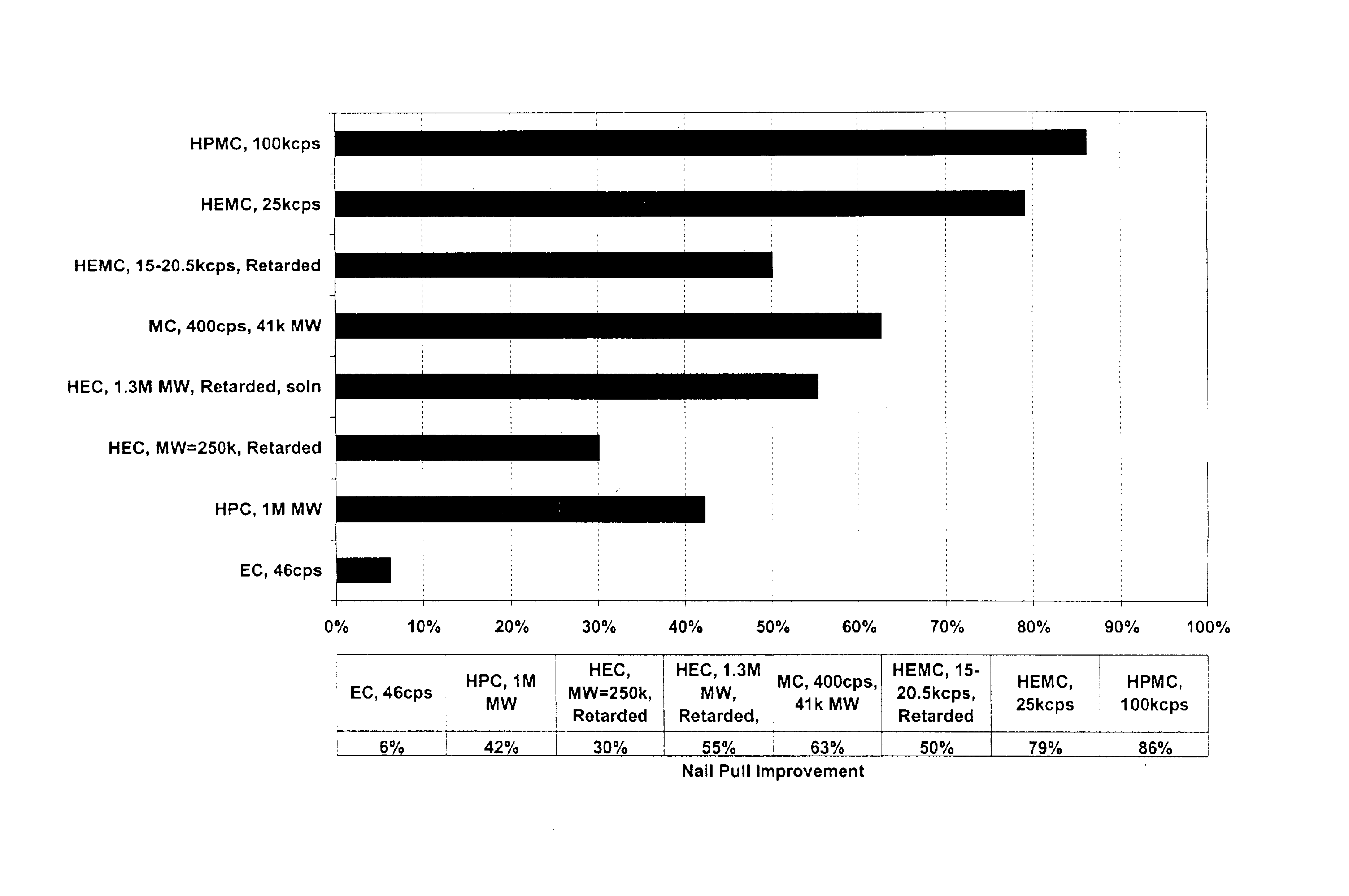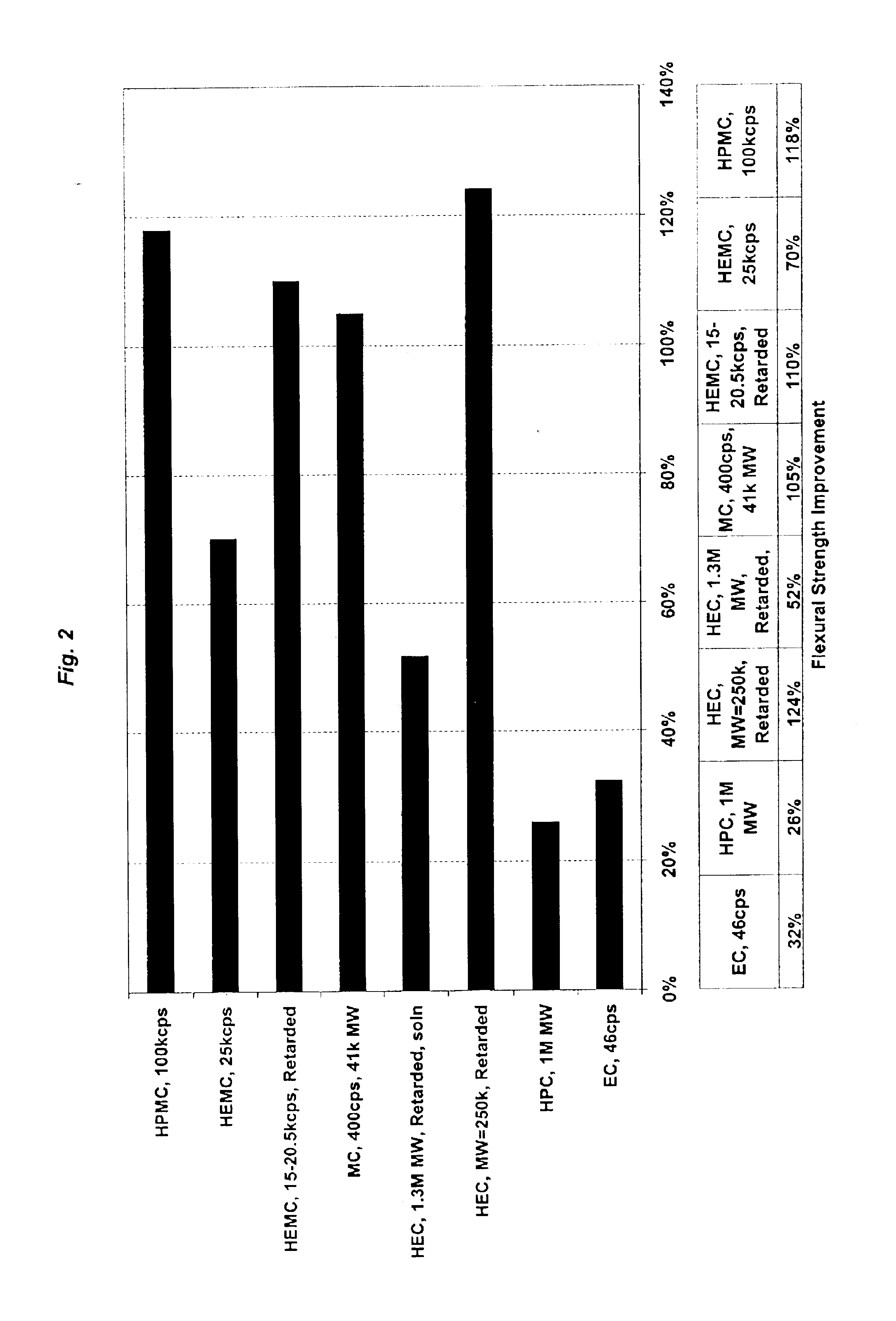Reinforced wallboard
- Summary
- Abstract
- Description
- Claims
- Application Information
AI Technical Summary
Benefits of technology
Problems solved by technology
Method used
Image
Examples
specific examples
Control Sample. One hundred grams of β-calcium sulfate hemihydrate was dry mixed with 0.13 g ground gypsum accelerator. The β-calcium sulfate hemihydrate was then added to 150 g of room-temperature tap water in a 500 mL Waring blender. The slurry was blended at low speed for 15 seconds. The slurry was then immediately poured into an approximately 7″×2″×½″ mold. After about 20 minutes, the sample was removed from the mold and placed in a convection oven at 45° C. in which it was dried for at least 36 hrs. After removal from the oven, the sample was cut to 5″×2″ and massed and dimensioned. This data was used to calculate sample density. The flexural strength was attained using a three-point-bend test similar to the ASTM C473 flexural strength test (method B) for gypsum wallboard. An Instron mechanical testing system with data acquisition software was used to determine mechanical behavior. The flexural failure stress was calculated from the failure load, testing configuration, and samp...
PUM
| Property | Measurement | Unit |
|---|---|---|
| Temperature | aaaaa | aaaaa |
| Time | aaaaa | aaaaa |
| Density | aaaaa | aaaaa |
Abstract
Description
Claims
Application Information
 Login to View More
Login to View More - R&D
- Intellectual Property
- Life Sciences
- Materials
- Tech Scout
- Unparalleled Data Quality
- Higher Quality Content
- 60% Fewer Hallucinations
Browse by: Latest US Patents, China's latest patents, Technical Efficacy Thesaurus, Application Domain, Technology Topic, Popular Technical Reports.
© 2025 PatSnap. All rights reserved.Legal|Privacy policy|Modern Slavery Act Transparency Statement|Sitemap|About US| Contact US: help@patsnap.com



